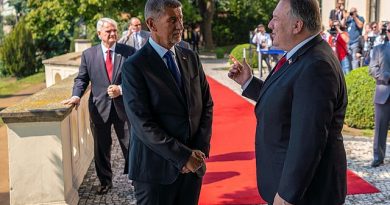FOCUS on Frozen Conflicts: Taiwan-China
Drew Starbuck
Staff Writer
Taiwan’s defense minister, former Taiwanese general Chiu Kuo-cheng, made headlines recently when he stood before the Legislature Yuan and predicted that China would launch a full-scale invasion of Taiwan by 2025. According to ABC News, the Chinese government in the past few weeks has sent more than 150 military aircraft to fly through Taiwan’s air defense zone in an attempt at intimidation. China’s People’s Liberation Army—the largest army in the world manpower-wise—oversaw large amphibious landing drills within Chinese territory next to the Taiwan Strait. The population of Taiwan is unconcerned about the threat of Chinese invasion, but the growing tension with their neighbors has grown much clearer, reports CNN.
Historically, Taiwan and China have a complex history together that started with the Chinese Civil War, which drove the Chinese nationalists led by the Kuomintang (KMT) into exile on the island of Taiwan. According to the Council on Foreign Relations, the People’s Republic of China views the island of Taiwan as a renegade province and vows to eventually “unify” Taiwan with the mainland, according to the “One China” principle. This principle is based upon the notion that the PRC is the only legitimate government of China and that eventually, the people of Taiwan will unify their government with the mainland.
The PRC also repeated this system of governance in Hong Kong, and a crackdown on democratic opposition there has strengthened the international community’s support for Taiwan, BBC reports. As the Council on Foreign Relations states, this understanding comes from the 1992 Consensus between the KMT, the ruling political party of Taiwan at the time, and the Chinese Communist Party (CCP). However, neither side properly accepted this agreement and never addressed the proper legal status of Taiwan.
The United States recognized the government in Taipei after the Chinese Civil War until the year 1979, when they switched their recognition of the official government of China to the PRC to acknowledge the “One China” policy. However, the United States continues to send military aid to Taiwan, with focused U.S. Air Force war games on defense against a potential Chinese invasion of Taiwan, reports Defense News. President Biden has also expressed his support for Taiwan and engaged in a series of policy changes designed to compete with China in the Indo-Pacific region by coordinating with American allies.
Despite its desire to reunify Taiwan with the mainland, Beijing is hesitant to initiate a full-scale invasion of Taiwan for the time being. This is primarily due to the personal reluctance of Chinese President Xi Jinping, who emphasized in early October his desire for “peaceful reunification” with Taiwan and is content to increase diplomatic and economic pressure until the island chooses to join the mainland, according to CNN. This is in part because an invasion and forceful reunification of Taiwan would be a very costly venture, including military losses the Chinese would incur, the damage done to the island’s infrastructure, and the threat of the United States coming to Taiwan’s defense.
Despite the risks involved, there is increased urgency among certain Chinese political elites pushing for a more forceful approach to the perceived renegade province due to the current political situation in Taiwan. As ABC News notes, the ruling Democratic Progressive Party has favored the potential declaration of independence from China in the past and has continued to develop a policy favoring the island’s self-rule status. Incumbent president Tsai Ing-wen already considers the island to be an independent state. The potential grave flashpoint that Taiwan presents continues to persist as a threat to geopolitical stability. Just like the capture of Saguntum in ancient times sparked a war between the great powers of Rome and Carthage, the possible invasion of Taiwan could herald the start of a great power war between the United States and China.

